
Soil Associations
1022a ALTCAR 1
Soil and site characteristics
Deep peat soils with earthy topsoil. Groundwater usually controlled by ditches and pumps. Risk of wind erosion.
Geology
Fen peat
Cropping and Land Use
Cereals, sugar beet, potatoes and horticultural crops in Lancashire and Fens; dairying on permanent grassland in Somerset; wetland habitats.
Component soil series
| Subgroup | Series name | Percentage | WRB 2006 link |
|---|---|---|---|
| 10.22 | ALTCAR | 50% | Drainic Rheic Fibric Histosols |
| 10.24 | ADVENTURERS' | 30% | Drainic Rheic Sapric Histosols |
Covers 229 km2 in England and Wales
Soilscapes Classification
| 27 |
Fen peat soils |
1022a ALTCAR 1
Detailed Description
The Altcar 1 association is extensive on the Somerset Moors, in the Fens and in Lancashire. There are also small areas in Northern England, Cheshire, Staffordshire and the Welsh Borderland. It covers about 223 km² nationally, at heights usually less than 6 m O.D. on fen peat, much of which has been reclaimed by drainage. The Altcar series, earthy eu-fibrous peat soils in grass-sedge peat, forms the main soil together with the more humified Adventurers' series, earthy eutro-amorphous peat soils. Inclusions of marine and river alluvium give Downholland and Midelney soils whilst glaciofluvial drift, which often fringes the peat, supports Isleham and Blackwood series
The association covers just under 75 km² in the region and is most extensive on the Lancashire coastal plain around Altcar and Banks and between Southport and Scaris brick. It flanks the river Douglas near Rufford and the river Wyre and its tributaries on the Fylde. Small basins of peat in Cheshire, Shropshire and Staffordshire also give rise to this association. Around Altcar and east of Southport, the soils are developed in reedswamp and fen-carr peat (Hall and Folland 1967). The reedswamp peat is developed almost entirely from Phragmites communis and sedges (Carex spp) and overlies silt or sand. The upper layers are naturally strongly acid, though the pH increases with depth. The carr peat, containing the remains of trees and shrubs, is less acid. North of the Ribble estuary, the narrow valleys are filled by fen-carr peat of variable composition. In many places, particularly where the upper layers have been cut for fuel, the land has been marled or had additions of night soil which have improved the nutrient status. Locally thin peat has wasted to expose organo-mineral muds at the surface, giving rise to Downholland soils. In Cheshire, Shropshire and Staffordshire the basin peats have developed as raised mosses, in reedswamp and fen-carr. They are often fringed by glacial deposits which support sandy gley soils of the Blackwood series.
In Somerset, the Altcar association occupies 80 km2 alongside the rivers Brue, Cary and Parrett, and in Avon there is a further 9 km2 near Kenn and in the Gordano valley. The peats mostly overlie clayey alluvium but spread in places over Lias clay and occasionally over gravelly drift. The peat is mainly between 2 m and 7 m thick, though locally it exceeds 8 m. The succession begins with thin basal reed peat, followed by thick grass-sedge peat sometimes interbedded with woody peat. Woody remains are particularly abundant on the southern side of King's Sedge Moor and in North Moor, where they include bog oaks. In places the peat is covered by clayey river alluvium; where this is more than 40 cm thick, the Midelney series is found. Where the clay is thinner the topsoil is strongly structured and has prominent rusty mottles. The underlying peat is black and well humified to varying depth and passes to browner more fibrous peat containing many recognizable plant remains. Altcar soils are less humified than Adventurers' soils which are humified to below 60 cm depth, particularly where the peat is woody. Both soils have prismatic structures with shiny faces between about 10 and 30 cm depth.
The association has developed in hollows, usually between hillocks or ridges of till. It covers 26 km², mostly in the western part of the Solway plain, between Aspatria and Silloth, where Common Moss, Salta Moss and small areas near Pelutho and Dundraw are included. It is also at Shaw Moss and Kirksanton, near Millom in south Cumbria. In Northumberland there are two occurrences, the larger being at Prestwick Carrs near Ponteland.
The association covers 27 km2 in Methwold Fens, Norfolk, where some land remains under semi-natural woodland but most is cultivated.
Soil Water Regime
When undrained these soils are permanently waterlogged almost to the surface (Wetness Class VI), In most areas, however, groundwater levels have been lowered by arterial and field drainage and the soils are well drained (Wetness Class I).
Cropping and Land Use
The land is mostly cultivated on the Lancashire coastal plain because of efficient artificial drainage. The soils are easy to cultivate and there is a long period in the autumn suitable for landwork but opportunities for work in spring are much fewer, particularly in wet years. A wide range of crops is grown, including early potatoes, field vegetables and celery. Topsoils are easily compacted when wet and, on drying, the plough layer becomes hard and brittle. When a peat soil is worked to a fine tilth and is exposed to drying winds and sun, its low bulk density can lead to windblow. This is most likely to happen in spring when the soil has been newly seeded. Further desiccation can lead to a condition where rewetting is impossible and this state is referred to as drummy. Where there is insufficient artificial drainage the soils are usually kept under grass and poach easily when wet. Large yields of grass can be sustained throughout the long growing season but access for mowing or grazing is restricted on many of the small undrained areas in Cheshire, Shropshire and Staffordshire. The land is often rush infested and there are patches of semi-natural woodland. Peat has been cut extensively in Lancashire, often to a depth of 2 m and sometimes several times on the same site. This, together with wastage following drainage and cultivation, has led to the gradual lowering of the land surface. Reclamation of the peatlands for agriculture in Lancashire is fully described by Hall and Folland (1970).
1022a ALTCAR 1
Distribution Map
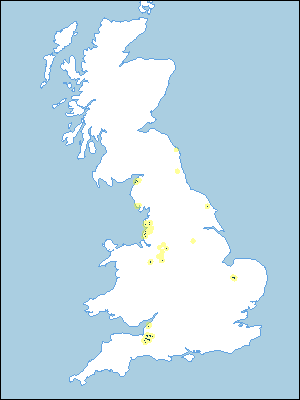 |
Note that the yellow shading represents a buffer to highlight the location of very small areas of the association.
Keys to component soil series
Midlands
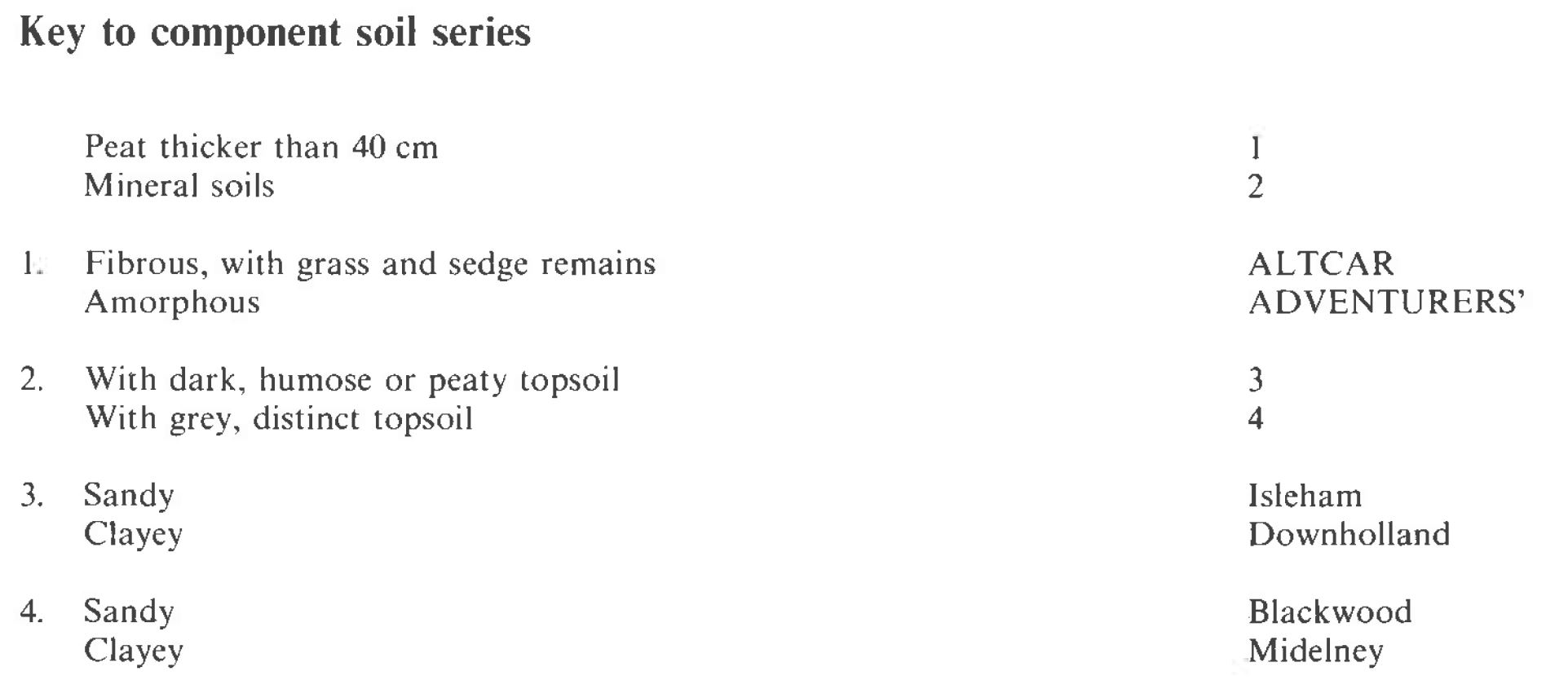 |
South Western Region
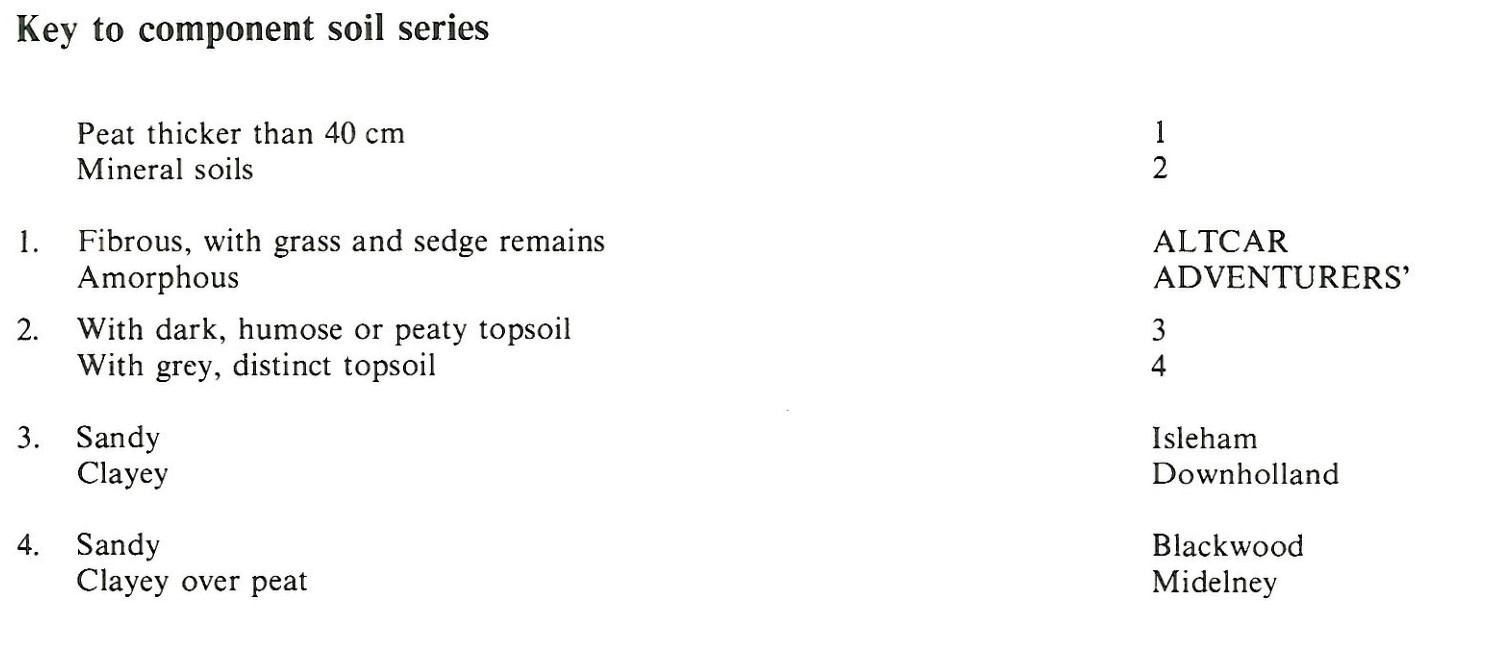 |
Typical Landscapes
South Western Region
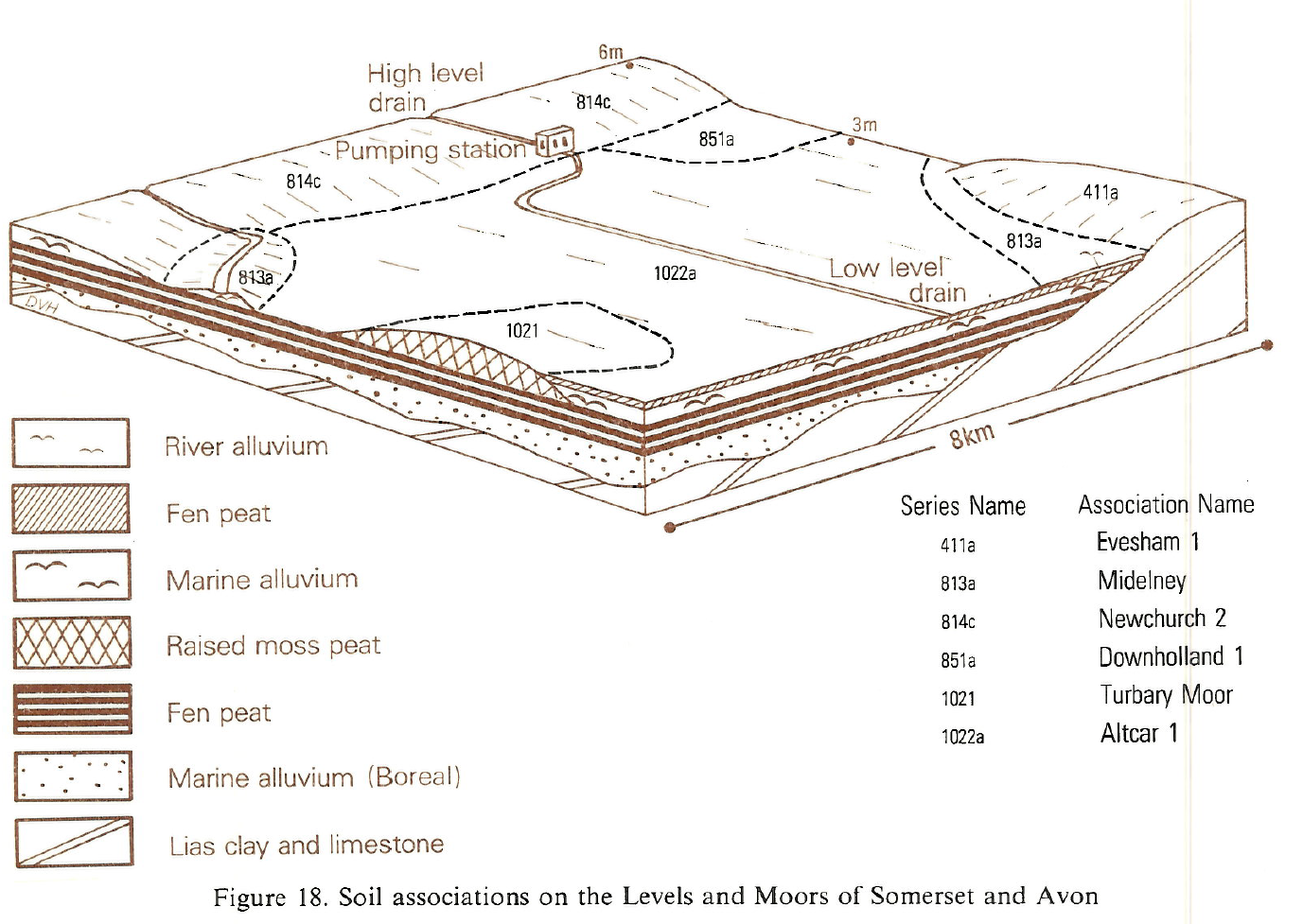 |
Midlands
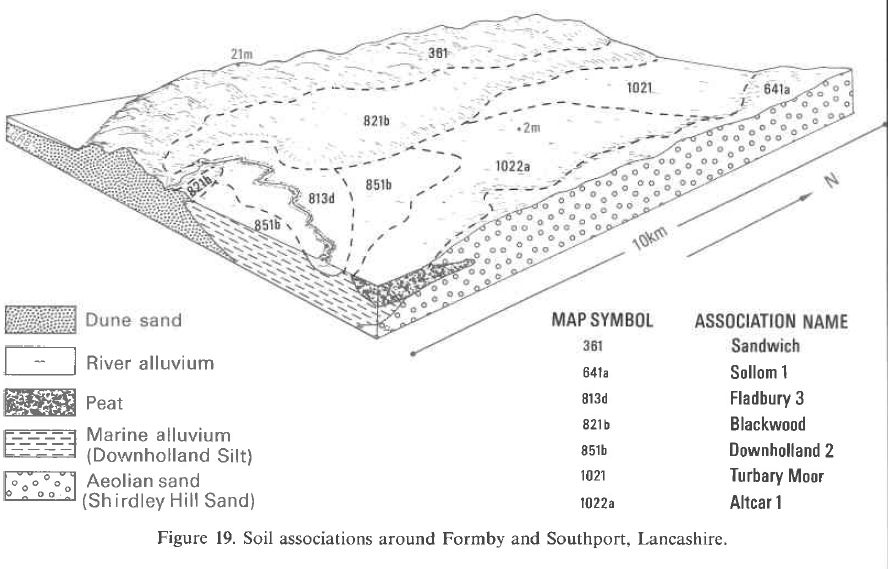 |
All information Copyright, Cranfield University © 2025
Citation: To use information from this web resource in your work, please cite this as follows:
Cranfield University 2025. The Soils Guide. Available: www.landis.org.uk. Cranfield University, UK. Last accessed 25/04/2025
